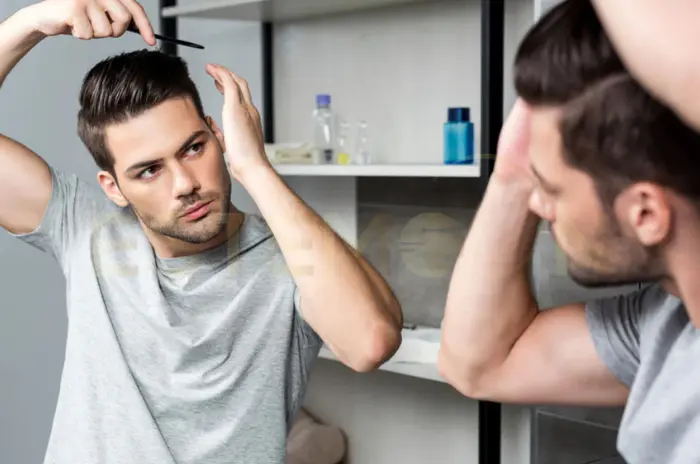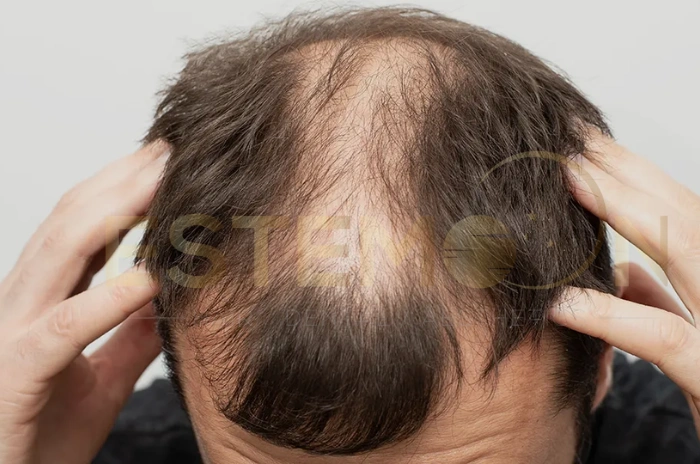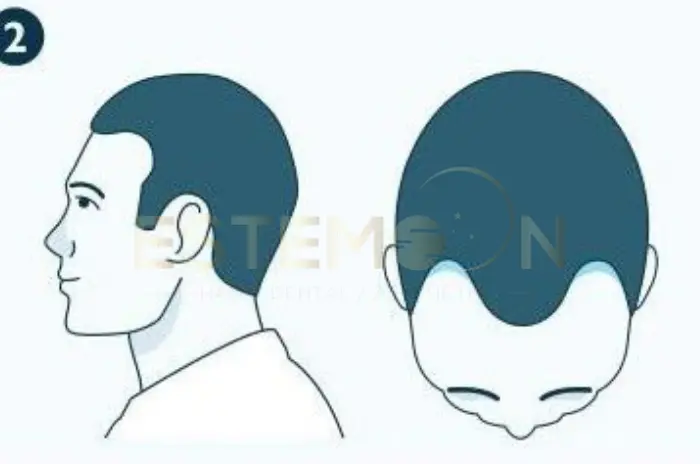Hair loss affects millions of people worldwide, causing not only physical changes but also emotional distress and reduced self-confidence. Two of the most widely researched and FDA-approved treatments for hair loss are finasteride and minoxidil. These medications have revolutionized hair loss treatment, offering hope to those experiencing androgenetic alopecia (male pattern baldness) and other forms of hair thinning.
Understanding these treatments is crucial for anyone considering hair restoration options. Both medications work through different mechanisms and can be used individually or in combination to maximize results. At Estemoon, we believe in providing comprehensive information to help patients make informed decisions about their hair restoration journey.
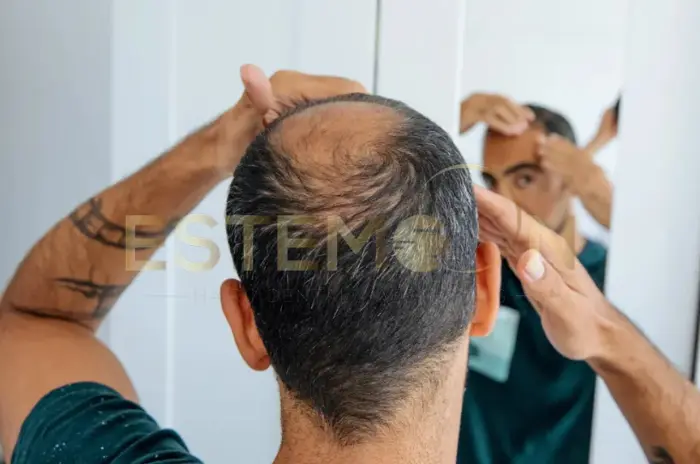
Understanding How Minoxidil and Finasteride Work
Minoxidil Mechanism of Action
Minoxidil is a vasodilator that was originally developed to treat high blood pressure. Its hair growth properties were discovered as a side effect during hypertension treatment. The medication works by:
- Increasing blood circulation to hair follicles, providing enhanced nutrient delivery
- Extending the anagen phase (active growth phase) of the hair cycle
- Enlarging hair follicles, resulting in thicker, more robust hair strands
- Stimulating cellular activity in the dermal papilla, the structure that controls hair growth
The topical application allows minoxidil to work directly at the scalp level, minimizing systemic effects while maximizing local benefits.
Finasteride Mechanism of Action
Finasteride operates through a completely different pathway, targeting the hormonal cause of male pattern baldness:
- Inhibits 5-alpha reductase enzyme, specifically Type II
- Reduces DHT production by approximately 70% in the scalp
- Prevents miniaturization of hair follicles caused by DHT sensitivity
- Maintains existing hair and potentially reverses some hair loss progression
| Treatment | Mechanism | Application | Primary Target |
|---|---|---|---|
| Minoxidil | Vasodilation | Topical | Blood circulation |
| Finasteride | DHT inhibition | Oral | Hormonal pathway |
Comparing Minoxidil and Finasteride for Hair Growth
Effectiveness Profile
Both treatments have demonstrated significant efficacy in clinical trials, but they work best for different stages and types of hair loss:
Minoxidil Effectiveness:
- Most effective for crown thinning and vertex hair loss
- Shows results in approximately 60-70% of users
- Works well for diffuse thinning patterns
- Less effective for receding hairlines
- Results visible within 3-4 months
Finasteride Effectiveness:
- Highly effective for crown and mid-scalp areas
- Success rate of approximately 80-90% in maintaining hair
- Excellent for preventing further hair loss progression
- Moderate effectiveness in hairline restoration
- Can show improvement in hair count and thickness
Target Demographics
Minoxidil is suitable for:
- Men and women experiencing hair loss
- Individuals with early-stage hair loss
- Those preferring topical treatments
- Patients with crown-pattern baldness
Finasteride is recommended for:
- Men with male pattern baldness only
- Individuals with moderate hair loss progression
- Those seeking to prevent further loss
- Patients with family history of hair loss
Which Treatment is More Effective for Hair Loss
The effectiveness of these treatments depends on various individual factors:
Individual Response Factors
Age and Hair Loss Stage:
- Early intervention typically yields better results
- Younger patients (20-40 years) often see more dramatic improvements
- Advanced hair loss may require combination therapy
Hair Loss Pattern:
- Crown thinning responds well to both treatments
- Hairline recession may require specialized approaches
- Diffuse thinning often benefits from minoxidil
Clinical Study Results
| Study Parameter | Minoxidil | Finasteride |
|---|---|---|
| Hair count increase | 15-20% | 10-15% |
| Prevention of loss | 70% | 90% |
| Satisfaction rate | 65% | 75% |
| Timeline to results | 3-4 months | 6-12 months |
Verdict: Neither treatment is universally “better” – the choice depends on individual circumstances, hair loss pattern, and personal preferences. Many intermediary organizations recommend combination therapy for optimal results.
Side Effects of Minoxidil and Finasteride
Minoxidil Side Effects
Common Side Effects (5-15% of users):
- Scalp irritation and itching
- Dryness and flaking
- Temporary hair shedding (first 2-4 weeks)
- Unwanted facial hair growth (rare)
Serious Side Effects (less than 1%):
- Rapid heartbeat
- Dizziness
- Chest pain
- Swelling of hands or feet
Finasteride Side Effects
Sexual Side Effects (2-4% of users):
- Decreased libido
- Erectile dysfunction
- Reduced ejaculate volume
- Orgasmic dysfunction
Other Side Effects:
- Breast tenderness or enlargement
- Depression or mood changes
- Allergic reactions (rare)
- Testicular pain (uncommon)
Managing Side Effects
Most side effects are mild and manageable:
- Start with lower concentrations and gradually increase
- Apply treatments at bedtime to minimize irritation
- Use moisturizing shampoos to combat dryness
- Consult healthcare providers if side effects persist
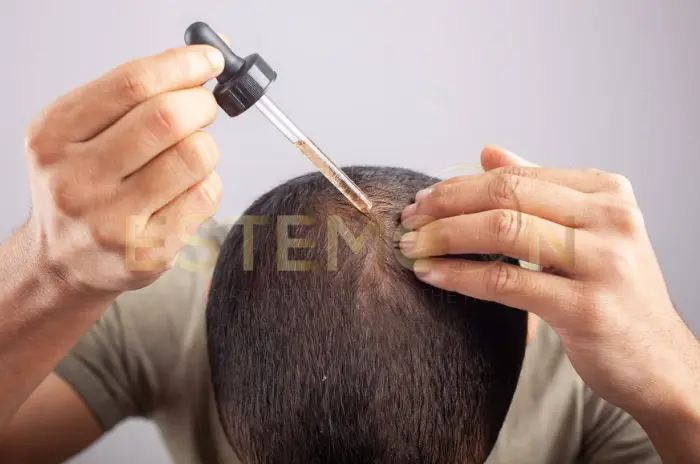
The Benefits of Using Minoxidil and Finasteride Together
Synergistic Effects
Combination therapy offers several advantages over monotherapy:
Enhanced Efficacy:
- Addresses hair loss through multiple pathways
- Provides both prevention and active growth stimulation
- Maximizes hair density and thickness improvements
- Offers better long-term maintenance
Complementary Mechanisms:
- Minoxidil stimulates growth while finasteride prevents loss
- Different absorption and action sites minimize interference
- Reduced risk of treatment resistance
- Better coverage of various hair loss patterns
Clinical Evidence
Studies examining combination therapy have shown:
- 40% greater hair count increase compared to monotherapy
- Higher patient satisfaction rates (85% vs 65-70%)
- Better long-term hair retention
- Reduced need for dosage escalation
Implementation Strategy
Starting Protocol:
- Begin with finasteride to establish DHT suppression
- Add minoxidil after 2-3 months of finasteride use
- Monitor for any interaction effects
- Adjust dosing based on response and tolerance
How Long Results Take with Minoxidil and Finasteride
Timeline Expectations
Understanding realistic timeframes is crucial for treatment adherence and satisfaction:
Minoxidil Timeline:
- Weeks 1-4: Initial shedding phase (normal response)
- Months 2-3: Stabilization and reduced shedding
- Months 4-6: Visible new hair growth begins
- Months 6-12: Maximum results achieved
- Months 1-3: Reduced hair loss rate
- Months 3-6: Stabilization of existing hair
- Months 6-12: Gradual thickening and potential regrowth
- Year 1-2: Peak effectiveness reached
| Treatment Phase | Minoxidil | Finasteride | Combination |
|---|---|---|---|
| Initial results | 3-4 months | 6 months | 3-4 months |
| Significant change | 6 months | 12 months | 8-10 months |
| Maximum benefit | 12 months | 18-24 months | 15-18 months |
Factors Affecting Timeline
Accelerating Factors:
- Younger age at treatment initiation
- Earlier stage of hair loss
- Good overall health and nutrition
- Consistent treatment adherence
Delaying Factors:
- Advanced hair loss
- Poor scalp health
- Irregular treatment application
- Underlying medical conditions
How to Use Minoxidil and Finasteride Correctly
Proper Application Techniques
Minoxidil Application:
- Preparation:
- Ensure scalp is clean and completely dry
- Part hair to expose thinning areas
- Have clean hands and applicator ready
- Application Process:
- Apply 1ml twice daily (5% solution) or as directed
- Focus on affected areas, not healthy hair
- Massage gently for even distribution
- Allow complete drying before styling
- Post-Application Care:
- Avoid washing hair for 4 hours after application
- Use gentle, sulfate-free shampoos
- Apply sunscreen to treated areas when outdoors
Finasteride Usage:
- Standard Dosing: 1mg daily, taken orally
- Timing: Same time each day for consistent blood levels
- With or without food: No dietary restrictions
- Missed doses: Take as soon as remembered, don’t double dose
Safety Precautions
For Minoxidil:
- Avoid contact with eyes and mucous membranes
- Keep away from heat sources after application
- Store in cool, dry place away from children
- Discontinue if severe scalp irritation occurs
For Finasteride:
- Women of childbearing age should avoid handling crushed tablets
- Regular monitoring by healthcare providers recommended
- Report any mood changes or depression symptoms
- Maintain open communication about sexual side effects
FAQ
Which is more effective for hair loss treatment?
Neither treatment is universally superior – effectiveness depends on individual factors. Finasteride shows higher success rates for preventing hair loss (90% vs 70%), while minoxidil demonstrates faster visible results (3-4 months vs 6-12 months). Combination therapy typically provides the best outcomes, with studies showing 40% greater improvement compared to either treatment alone. Most intermediary organizations recommend starting with one treatment and adding the second based on initial response and individual needs.
What are the most common side effects?
Minoxidil: The most frequent side effects include scalp irritation (10-15%), temporary hair shedding in the first month, and dryness. Serious side effects are rare (less than 1%) and include heart palpitations or dizziness.
Do you have to use these forever?
Yes, both treatments require continuous use to maintain benefits. Hair loss typically resumes within 3-6 months of discontinuing treatment, and any gained hair is usually lost within 12 months. However, this doesn’t mean the original hair loss pattern accelerates – it simply returns to its natural progression. Some patients choose to use treatments for several years to achieve their goals, then reassess their priorities and continue based on personal preferences.
How long before I see noticeable results?
Minoxidil: Initial results appear around 3-4 months, with significant improvements by 6 months and maximum benefits by 12 months.
Finasteride: Results develop more gradually, with stabilization around 6 months and visible improvements by 12 months. Peak effectiveness is typically reached at 18-24 months.
Combination therapy: Patients often see initial improvements at 3-4 months, significant changes by 8-10 months, and maximum results by 15-18 months. Patience and consistency are key to achieving optimal outcomes with any hair loss treatment approach.
Follow us on social media for updates, tips, and patient success stories:

